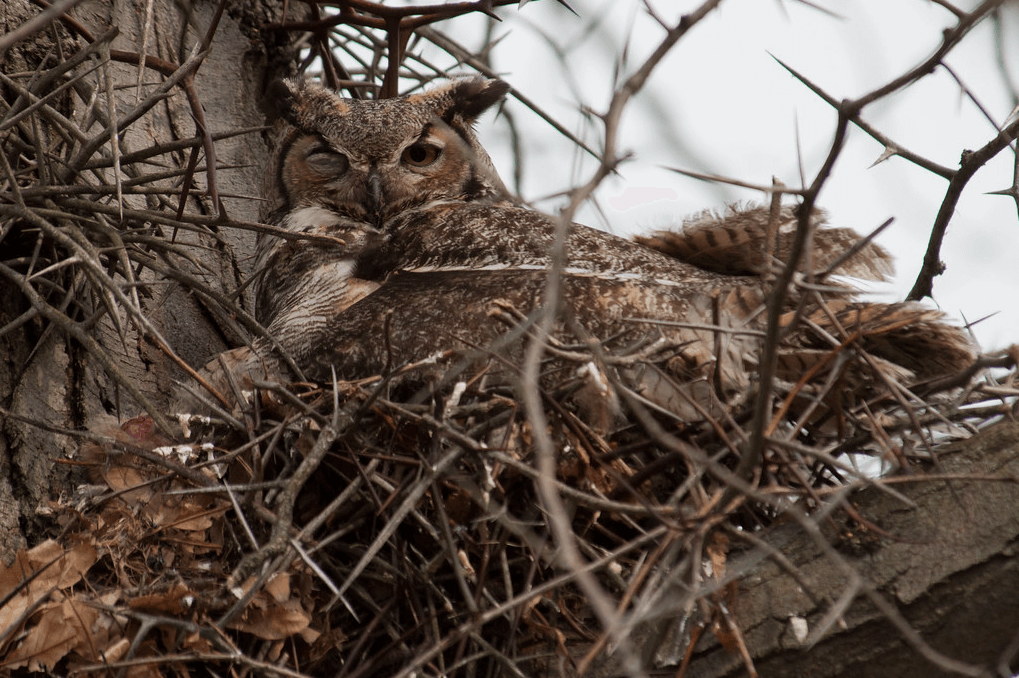By guest blogger Suzanne Elfstrom
On July 25th the Montana Osprey Project wrapped up its onsite banding research for the year with the help of summer campers from MNHC. The Montana Osprey Project studies the ecology of these birds and whether the birds have been contaminated with heavy metals (from mining) in the upper Clark Fork River and its tributaries.
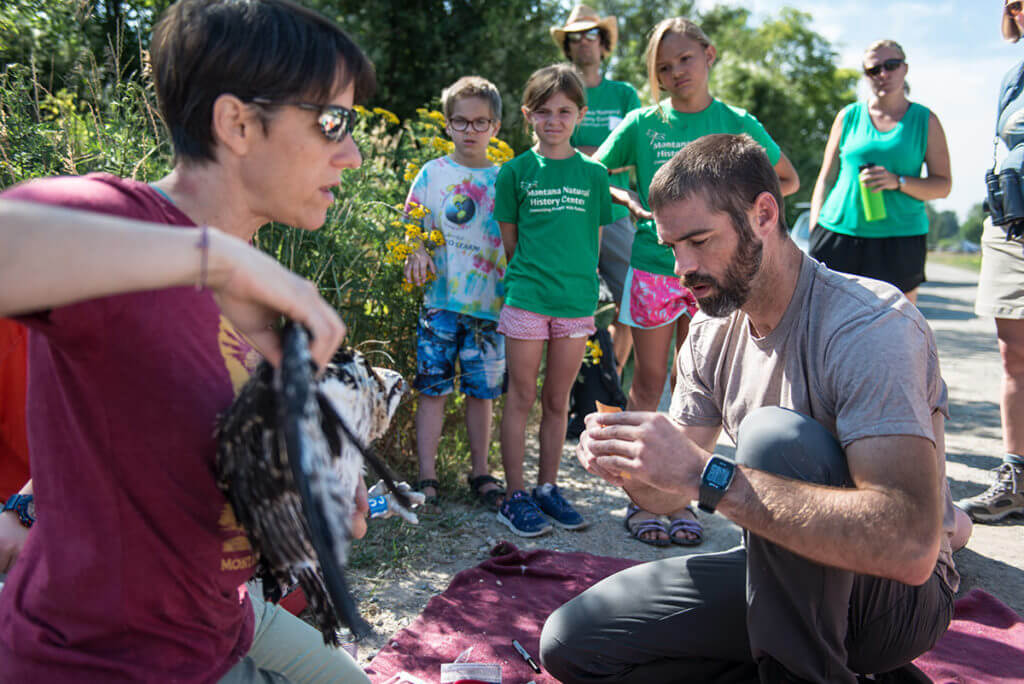
Photo Credit: Bart Bauer
Some may wonder why the Montana Osprey project is wrapping up its research component just when summer in Montana seems to be hitting its stride. The answer is that the osprey chicks are also about to hit their stride. The chicks believe they can fly — but they can’t, quite yet. Around this time of year they are right on the threshold of taking that first leap out of the nest. Because of that, when the researchers move in for the capture the chicks start moving in the opposite direction, so the researchers have to be extra careful the birds don’t fall out of the nest. Also, as the summer goes on, capturing these growing creatures becomes more of a challenge because as chicks mature they get a bit feistier — and their beaks and claws are growing along with their personalities.
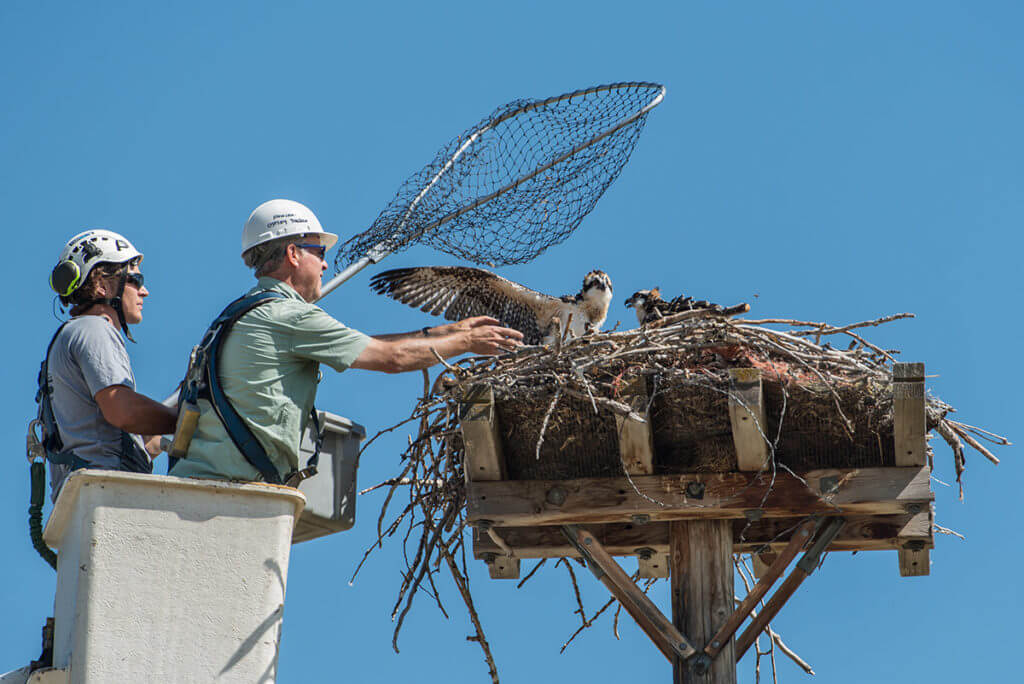
Photo Credit: Bart Bauer
In addition to the summer campers, we were also joined by bloodsucking mosquitoes en masse, sheep and their herding companion, and — oh, yes — Mama Osprey. She was clearly not impressed by our presence. Mama circled overhead the entire time, screeching and carrying a fish in her claws. I’m sure she felt we were up to no good and that only harm would come to her babies.
As bad luck would have it, harm had come to one of her babies long before we ever arrived. In addition to two healthy chicks, we discovered an unhatched egg and another small hatchling that had not survived. The poor chick died because its right leg was wrapped in baling twine, essentially tying it to the nest. Finding twine in osprey nests is unfortunately a common occurrence. The twine is soft and therefore provides a nice, comfy nest — but obviously can be dangerous. When our host, Erick Greene, asked the kids to quantify how much twine had been discovered in the nest, they shouted out, “A ton!” You can see for yourselves.
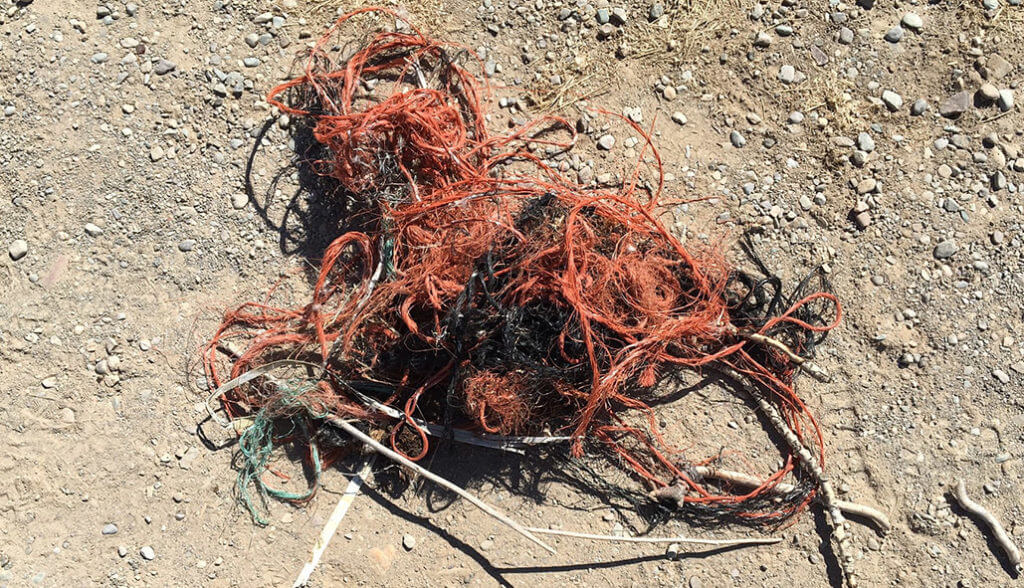
Photo Credit: Suzanne Elfstrom
So, getting back to the project at hand: each chick goes through a series of quick steps in order for the researchers to gather enough information to determine the overall health of the bird and track metal toxins in the river.
- Banding: there are two bands placed on the bird’s leg. One is a bright blue plastic band with a combination of one number and one letter. This leg band lets observers like myself identify the bird and share that information with the project regarding the bird’s activities. The other band is metal and has a longer shelf life. This second band is identified within the project’s records and associated with the bird’s overall statistics.
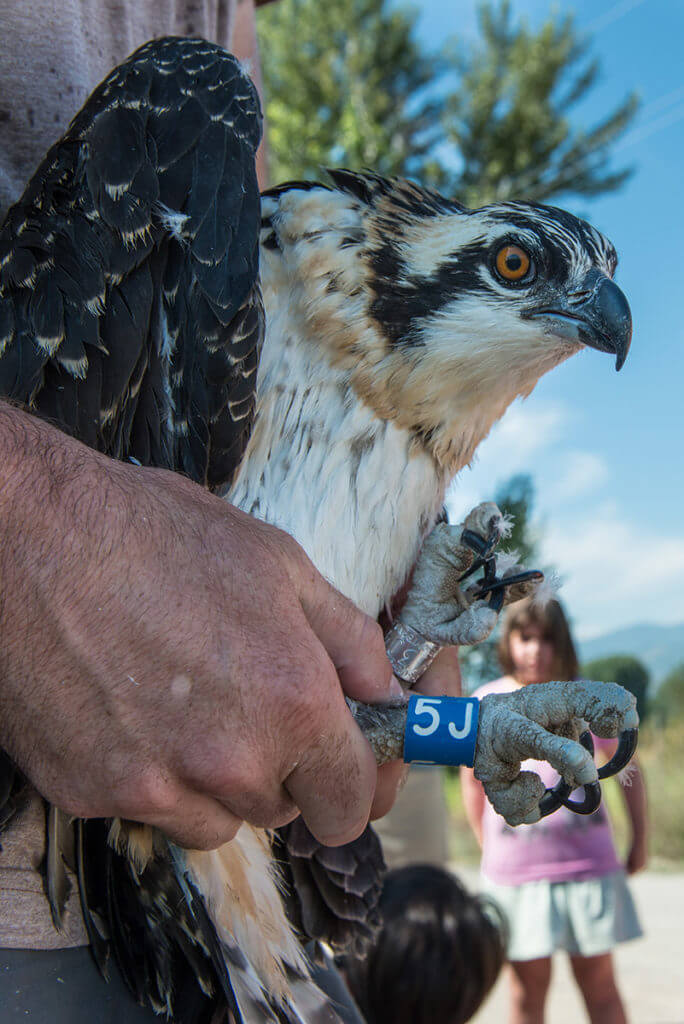
Photo Credit: Bart Bauer
- Feather collection: after the bird is banded, data collection begins. The first step: a feather is plucked from the bird and placed in an envelope marked with the silver band number. This is done to get a measure of the heavy metals at the time the feather was grown, and it also serves as a backup to the blood sample.
- Weighing: how do you weigh a bird that won’t stand still? Why, you wrap it up in a sleeve of an old sweatshirt, of course. While birds don’t normally lie on their backs, this little guy (or gal) behaved like a champ!
- Blood sample collection: the trickiest part of the process is getting the blood sample. The researcher, Dalit Guscio (shown here on the left), requires steady hands and asked for silence among the audience. Birds’ veins are so small there is not a lot of room for error. But the blood that is drawn from the bird will provide researchers a DNA sample and reveal the sex of the bird; the blood sample will also show if the bird has any heavy metals in its system and identify those metals if present.
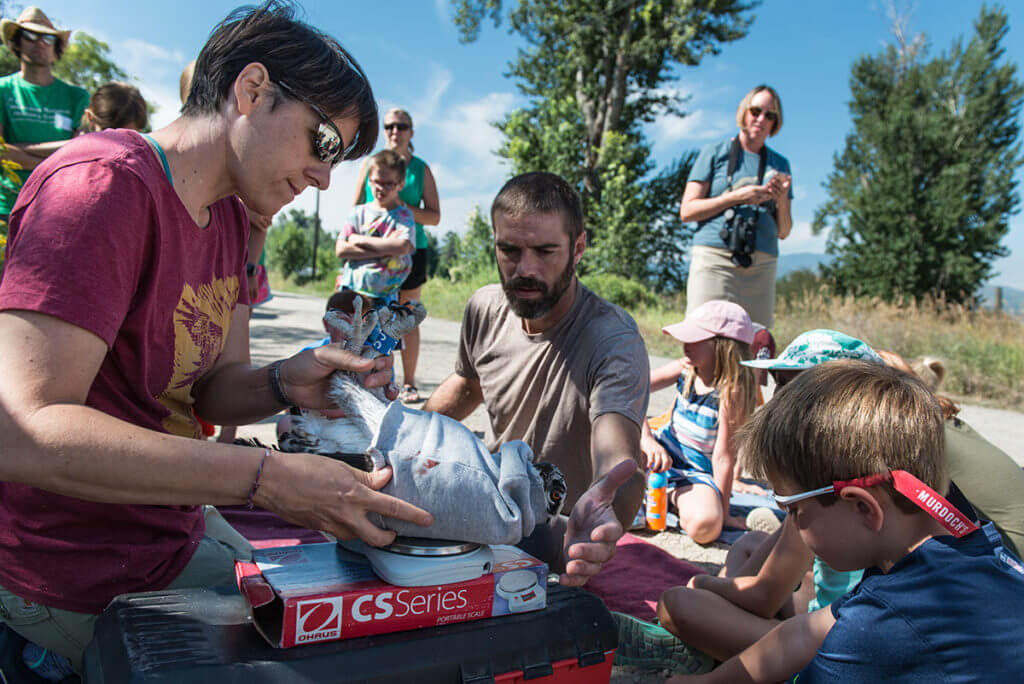
Photo Credit: Bart Bauer
Since 2006, more than 300 chicks have been cataloged. And each summer, around 20 nests along the Clark Fork River corridor are monitored. You can check out live nest cams located at Hellgate Canyon and Dunrovin Ranch in Lolo. Housed at the University of Montana, the project is also supported by the Cornell Lab of Ornithology.
The chicks safely returned to their nest and joined by Mama Osprey marked the end of our adventure. Afterward, camp counselor Torrye safely returned the Montana Natural History Center’s “osprey chicks” to their bus.
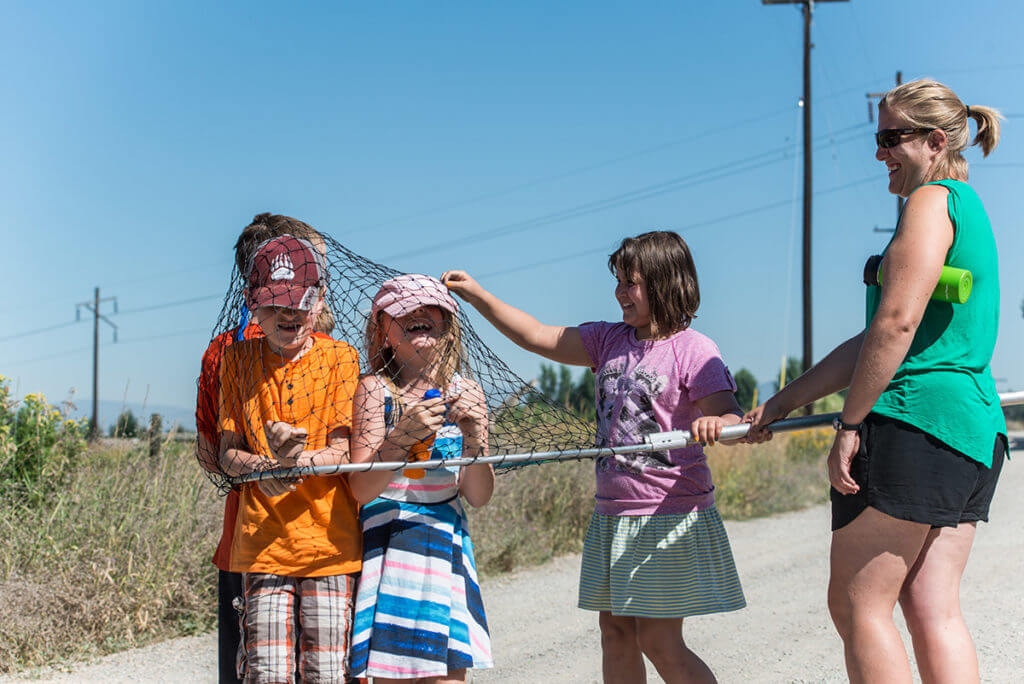
Photo Credit: Bart Bauer
Special thanks to the Montana Osprey Project (Erick Greene, Rob Domenech, Adam Shreading, and Dalit Guscio).




